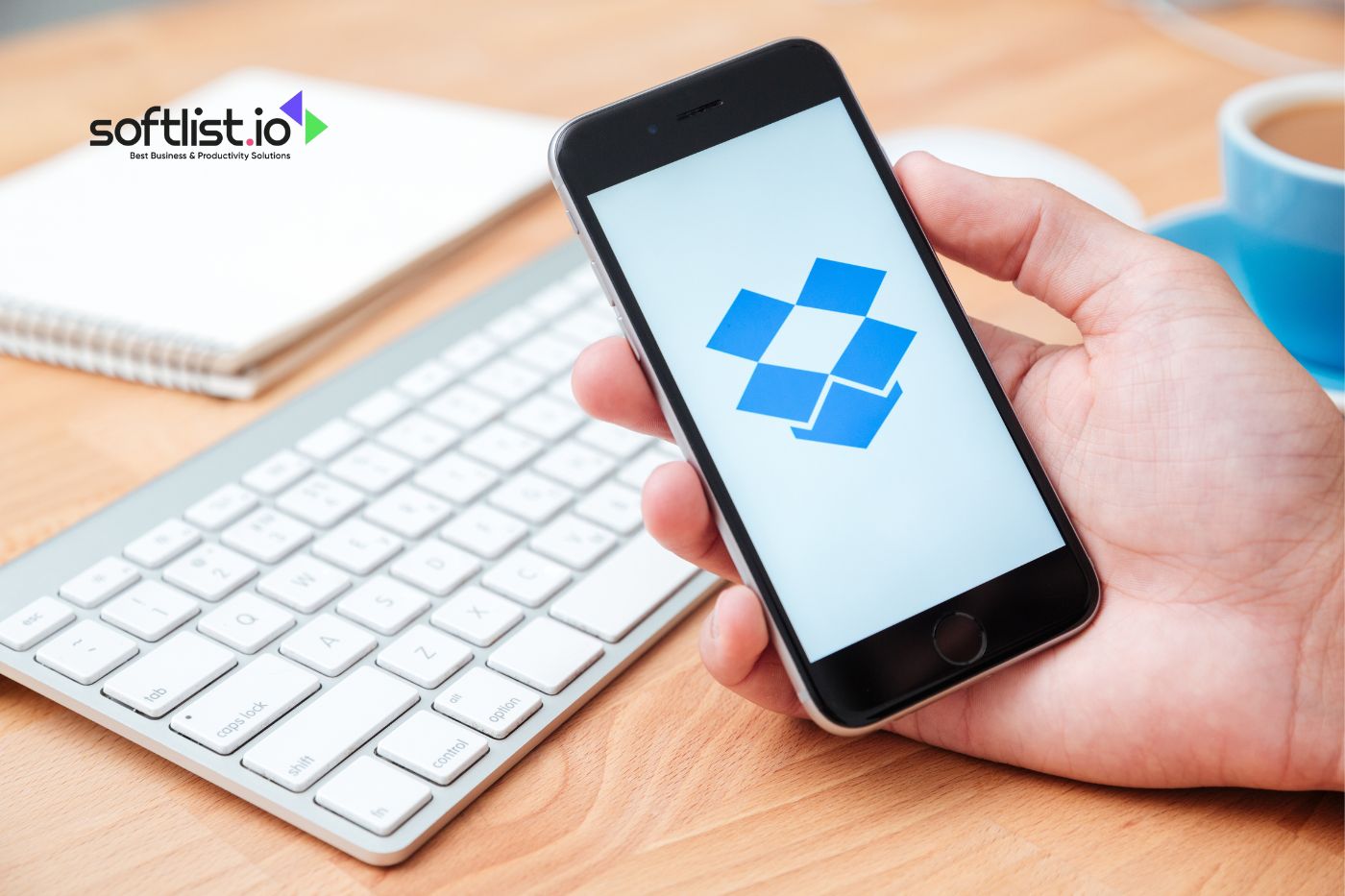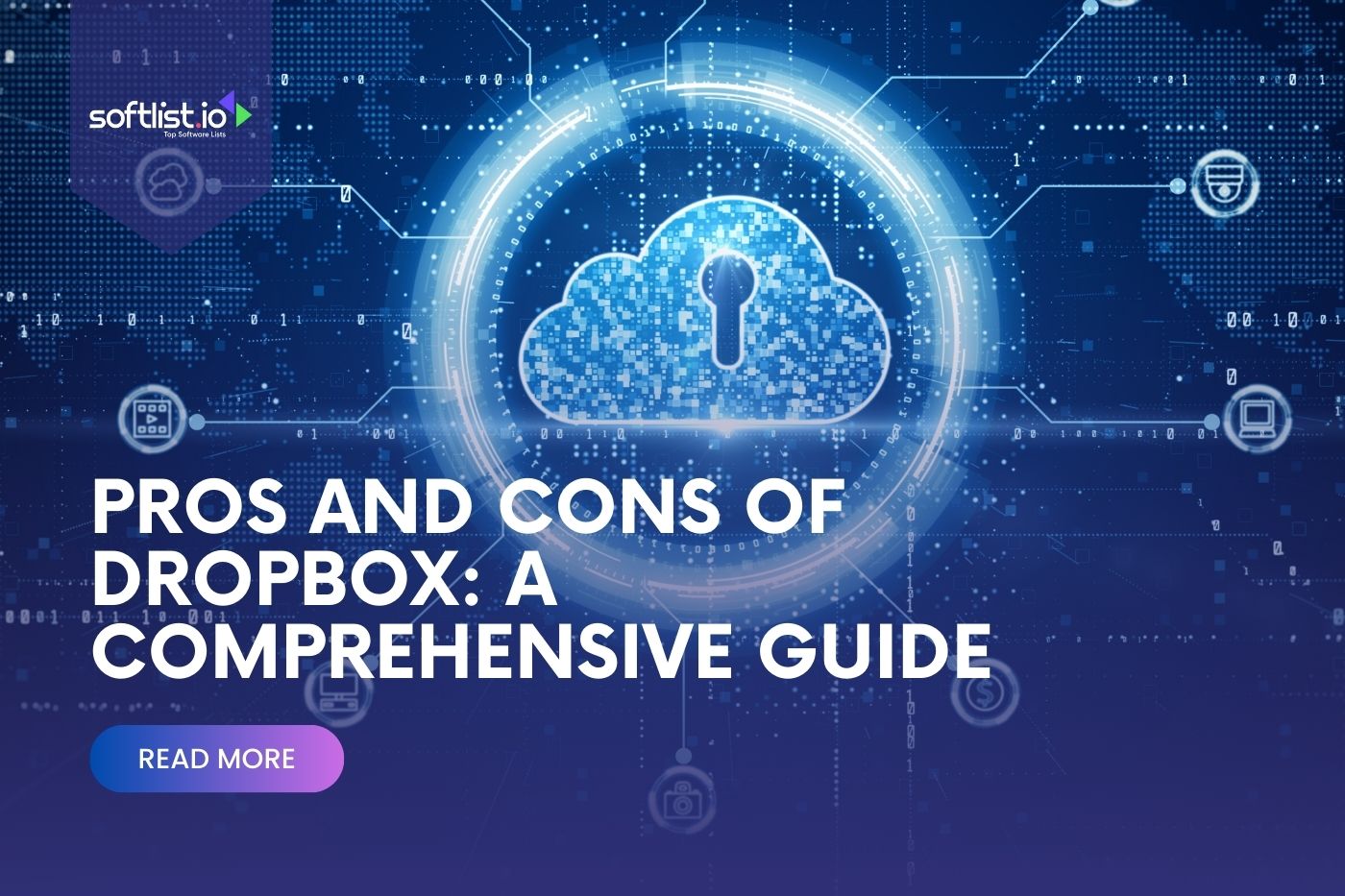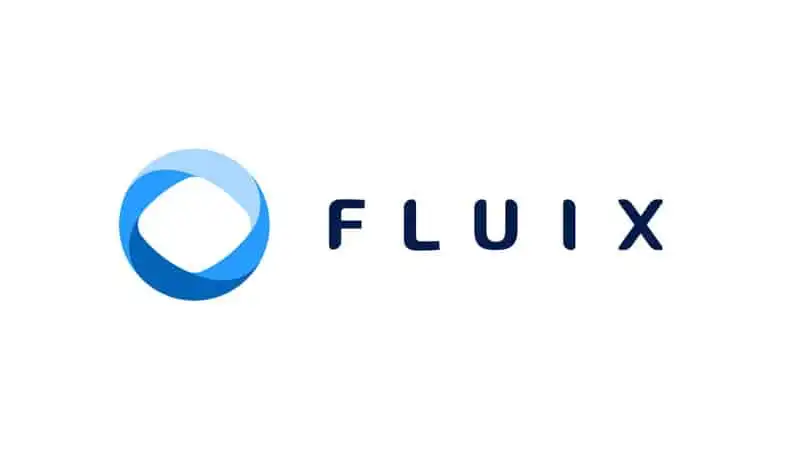Finding the right cloud storage service is important in today’s data-driven world. Dropbox shines here because it makes storing, sharing, and keeping track of your files easier. Dropbox is known for having a simple interface. It lets users make a Dropbox folder to share and manage files quickly.
While it has become a favorite for many, offering great features for teamwork and security, it’s not without its challenges. Issues like limited storage on the free plan and the costs of premium subscriptions are points to consider.
This article aims to give you a clear view of what it offers, weighing its user-friendly approach and collaboration features against the concerns over space and privacy. Whether you’re tech-savvy, new to cloud storage, or looking for a business solution, our breakdown aims to help you see if Dropbox fits your needs.
Let’s look at what makes Dropbox a top choice and where it might fall short.
Pros You Need to Know About Dropbox

Source: Canva Pro
Dropbox has become a go-to file storage platform for countless users around the globe. It’s not just about storing files; it also excels in features that boost collaboration, user experience, and security. Let’s unpack the key advantages and disadvantages of using Dropbox for personal and business needs.
Ease of Use
Dropbox’s interface is famously user-friendly. It’s built for ease, making it a breeze for anyone to manage their Dropbox folder, regardless of their tech expertise. Uploading files, sorting through different file types, and retrieving your data are straightforward. This ease of use encourages wide adoption, positioning Dropbox as a friendly cloud storage option.
Seamless Synchronization
The efficiency and reliability of Dropbox’s synchronization are top-notch. Whether switching between a smartphone and a laptop or between home and work, it ensures your files are up-to-date across all platforms. This feature benefits those needing constant access to the latest file versions, supporting a flexible and productive workflow.
Collaboration Tools
At its core, Dropbox is designed to facilitate collaboration. It makes working as a team easier by letting multiple people edit papers simultaneously and sharing large files quickly and easily. Dropbox Business takes this further, offering advanced tools for team collaboration and file sharing, making project management smoother and more integrated.
Security Measures
It doesn’t take security lightly, implementing stringent encryption for both file storage and transfer, coupled with two-factor authentication. These security measures are crucial for users and businesses prioritizing the safety of their sensitive data, providing confidence in Dropbox as a secure cloud storage solution.
Cons of Dropbox

Source: Canva Pro
Dropbox, a leading cloud storage platform, is widely recognized for its versatility and user-friendly features. However, when considering it for personal or business use, it’s vital to weigh its advantages and disadvantages.
Let’s dive into the cons of using it, highlighting areas like free storage limitations, subscription costs, and privacy concerns that users need to consider.
Limited Free Storage
Dropbox’s free Basic plan offers a modest 2GB of storage, which quickly becomes insufficient for users with substantial file storage needs. Whether it’s a collection of high-definition videos, a large photo library, or numerous documents, the free Dropbox tier might not cut it.
This limitation poses a challenge, especially compared to other cloud storage platforms offering more space to free users. For those relying on a local drive or hard drive for backup, the transition to Dropbox’s cloud storage might seem limiting without opting for a paid upgrade.
Subscription Costs
For users whose storage needs exceed the free tier, Dropbox for Business and other premium plans come into play, offering more space and additional features. However, the cost of these subscriptions can be a sticking point.
Evaluating the advantages of upgrading against the subscription costs is crucial, as these fees can add up, particularly for small businesses or individuals mindful of their budget. The decision to invest in it over continuing with a traditional hard drive or exploring other cloud storage options depends on carefully analyzing value versus expense.
Privacy Concerns
In an era where digital privacy is a hot topic, it has not been immune to scrutiny regarding how it handles user data. Despite its robust security protocols, past controversies and ongoing discussions about user privacy, data access, and compliance with data protection laws have made some prospective users cautious.
Those with concerns over the privacy of their files might pause to consider how it’s policies compare with their expectations for data security, especially when sensitive information is involved.
Navigating Dropbox’s Features

Source: Canva Pro
Diving into what Dropbox, a cloud storage giant, brings to the table is critical for anyone looking to harness its full potential. This segment sheds light on the varied subscription plans Dropbox offers and underscores the unique features and add-ons that make it stand out.
Such insights are crucial for those pondering the right plan or comparing it with alternatives like Google Docs.
Comparing Plans: Free vs. Paid
Dropbox rolls out a suite of plans, starting with a free Basic plan offering 2GB—perfect for users with minimal storage needs. For those needing more elbow room or extra features, Dropbox steps up with several paid plans:
- Plus Plan: This is a step up for individuals requiring more storage, beefing up space and adding handy features like Smart Sync.
- Family Plan: Catering to up to six users, it’s great for families wanting to pool their files in your Dropbox in one accessible spot.
- Professional Plan: Tailored for professionals and freelancers, it packs even more storage and tools, such as advanced sharing controls, to streamline file organization and collaboration.
- Standard and Advanced Business Plans: Best suited for teams and businesses, these plans offer expansive storage and Dropbox for Business tools designed to bolster teamwork and easily manage accounts.
Choosing the right tier involves weighing your storage demands, the perks of additional features, and the overall investment to pinpoint which package hits the sweet spot.
Unique Features and Add-Ons
Dropbox isn’t just a place to store files; it also has tools to help users organize and share their files more efficiently:
- Dropbox Paper: A dynamic space where teams can jointly craft, tweak, and share documents on the fly, enhancing collective creativity and efficiency.
- Smart Sync: A lifeline for accessing all the files in it straight from the Dropbox desktop, keeping your local drive uncluttered by offloading files online until they’re called upon.
- Dropbox Transfer: A convenient solution for shipping off large files or folders, ensuring the recipient, Dropbox account or not, gets them without a hitch, complete with tracking perks.
- Vault: Acts as a secure corner within it with an additional PIN layer, offering a haven for your most delicate documents.
These features, among others, elevate it from a mere cloud storage platform to an integrated tool for collaboration, file management, and secure sharing.
Whether used for personal needs, professional endeavors, or running a business, getting acquainted with these functionalities can immensely enrich your experience, especially when you go with Dropbox.
Dropbox in Comparison
When sizing up cloud storage options, it is in a tight race with giants like Google Drive and OneDrive, each boasting its popular features, storage solutions, and integration capabilities.
This look at how it fares against its key competitors can help you decide if it’s the simple cloud storage solution you need or if another platform might better suit your online storage demands.
Dropbox vs. Google Drive
- Storage and Dropbox Cons: Google Drive, through Google One, often outshines Dropbox by offering more storage at lower prices. While it uses a more straightforward plan system, it might need more for users looking for extensive free storage.
- Integration and Collaboration: It holds its ground with Dropbox Paper and its wide range of third-party app integrations, appealing to users needing versatility across it. Google Drive, however, excels with its seamless integration within the Google ecosystem, particularly with Google Workspace apps, offering a cohesive environment for collaboration.
Dropbox vs. Microsoft OneDrive
- Ecosystem Compatibility: OneDrive shines for users entrenched in the Microsoft environment thanks to its tight integration with Windows 10 and Office 365. Conversely, Dropbox prides itself on being platform-agnostic, ensuring smooth file sharing and collaboration across it and with any folder on your computer or device.
- Storage Plans: OneDrive might edge out for free users with its 5GB offering compared to Dropbox’s 2GB. However, Dropbox’s range of plans for personal and Dropbox for Business users caters to a broad audience, from individuals to large teams.
Dropbox vs. iCloud
- Platform Focus: iCloud’s design for the Apple ecosystem makes it a go-to for those deeply invested in Apple products, offering a level of integration Dropbox doesn’t. Meanwhile, its strength lies in its ability to function seamlessly across various operating systems, making it a versatile choice for users with diverse device preferences.
- Functionality and Features: iCloud may be the better bet for Apple users focused on syncing and backup, but it offers more file organization, editing permissions, and the flexibility to work with different file types and sizes.
Making the Decision
Finding the best cloud storage service, like Dropbox, means carefully examining what it provides and how it compares to your needs. Let’s simplify the process, focusing on key factors to consider.
Assessing Your Cloud Storage Needs
- Storage Capacity: Its free Basic plan provides 2GB of storage space, which might be enough for some. However, if your files quickly fill this space, it’s time to think about whether upgrading makes sense for you financially and practically.
- Collaboration and Integration Needs: It shines with features like Dropbox Paper, facilitating teamwork even if you work remotely. Yet, if your work heavily relies on Google Docs or Microsoft Office, services like Google Drive or OneDrive may offer tighter integration.
- Ecosystem Compatibility: It has become a versatile tool, easily installed across various devices, making it a solid choice for many. But your existing ecosystem—be it Apple, Google, or Microsoft—might sway you towards their specific online storage options for a smoother workflow.
Evaluating the Cost-Benefit Ratio
- Subscription Costs vs. Free Storage: Weighing the perks of its subscription against its free offering is crucial. Ask yourself if the additional features justify the expense, especially when alternatives might offer more space for free.
- Advanced Features Worth the Price: It also offers unique enhancements that could make the subscription value for money, like better file organization or editing permissions. Consider how these could impact your daily tasks.
Considering Privacy and Security
- Data Protection Measures: Its security framework is robust, employing encryption for files uploaded to the cloud. Assess if these measures align with your security expectations.
- Privacy Policies: It’s wise to review Dropbox’s approach to privacy and any historical data concerns. Users should feel confident their information is handled with care.
Is Dropbox Right for You?
Deciding on it involves balancing these aspects. If seamless sync across devices, straightforward file sharing, and a solid set of collaboration tools are what you need, it might be your match.
Yet, it pays to shop around for those prioritizing more free Dropbox basic space or needing a cloud solution that melds seamlessly with specific productivity suites. Remember, the best choice aligns with your workflow, security standards, and budget.
Best Alternative Software for Dropbox
| 3.5 | 3.5 | 3.5 |
Final Thoughts
Picking the right cloud storage provider, such as Dropbox, means weighing the pros and cons you need to know. It is favored for its user-friendly interface, effective syncing across devices, and excellent tools for collaboration, although the free version only provides 2GB of free storage space.
This might not be enough for everyone, highlighting a limitation for individual users who need more space. Despite this, it offers a range of plans, making it a versatile choice for file access, whether you’ve just installed it or are a long-time user.
Thanks to its functionality and the app that enhances user experience, it’s also one of the most popular cloud storage solutions. If you’re considering Dropbox, consider how much storage you need and whether its features align with your requirements.
Sharing your experiences with it can guide others in choosing, emphasizing the importance of selecting a service that offers free space and secures and simplifies your digital workload.
FAQs: Addressing Common Concerns
How does it ensure data security?
It champions data security by using state-of-the-art encryption for stored data and transit data, coupled with two-factor authentication, enhancing account safety. These security protocols are in place to shield your files from unauthorized eyes and safeguard your privacy.
Can I work offline with Dropbox?
It empowers users to tag specific files for offline use, allowing you to access and work on your files without an internet connection. Any modifications made offline get automatically synced up once you’re back online.
What are the limitations of its collaboration features?
Although it excels with its collaboration tools, it’s worth noting that features like file versioning and real-time editing might not be as advanced as those found in specialized collaboration platforms like Google Drive or OneDrive. For those who frequently collaborate on files in it, be mindful of possible sync delays, especially with larger file sizes.
How do Dropbox’s costs compare to its benefits?
It is useful for different types of users, and premium plans have extra features for heavy customers. A basic service or other options may work if your wants and budget are simple.
What is Dropbox mostly used for?
The best thing about it is that you can access your files from anywhere. If you put the app on your phone or tablet running iOS or Android, you can view files, work on them, and share them with others.










